Ólafur Arnalds on making characterful sounds, fusing piano and synths and collaborating with Bonobo
Marrying the worlds of synthetic pop, techno and classical music and forgrounding his trademark delicate piano, Ólafur Arnalds explains how he constructed his latest album both pre- and post-lockdown.
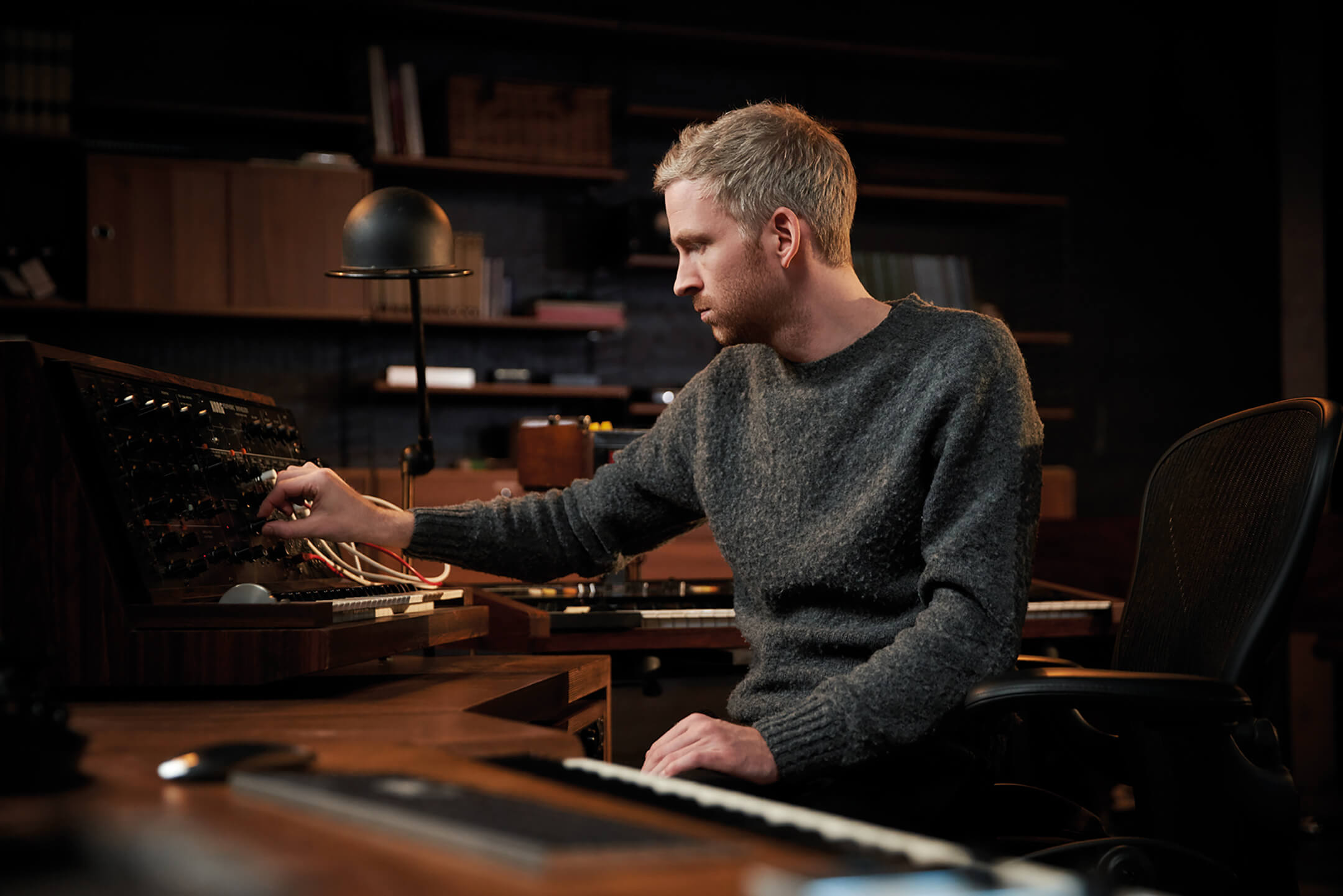
Ólafur’s studio was cultivated very particularly. “I can’t write just anywhere,”
he says
The name of Ólafur Arnalds new album is Some Kind of Peace. We wish. Clearly fate took an ironic opportunity to intervene shortly before we had a chance to talk to him about both the new album and his approach to creativity more broadly: an earthquake shook Iceland right before this interview took place, prompting Ólafur’s opening exclamation of, “There’s a lot of energy in my body right now!”
That’s true, of course, for all sorts of reasons. Having reimagined the piano with his remarkable, semi-generative Stratus instrument, which has been exquisitely sampled and captured by Spitfire Audio, Ólafur sought to follow his 2018 LP Re:member with a record that represents a sea change in how this musical perfectionist has decided to approach life. His aim? To let his guard down. Here, we press Ólafur on what spurred such an approach and how he achieves his unique sound.
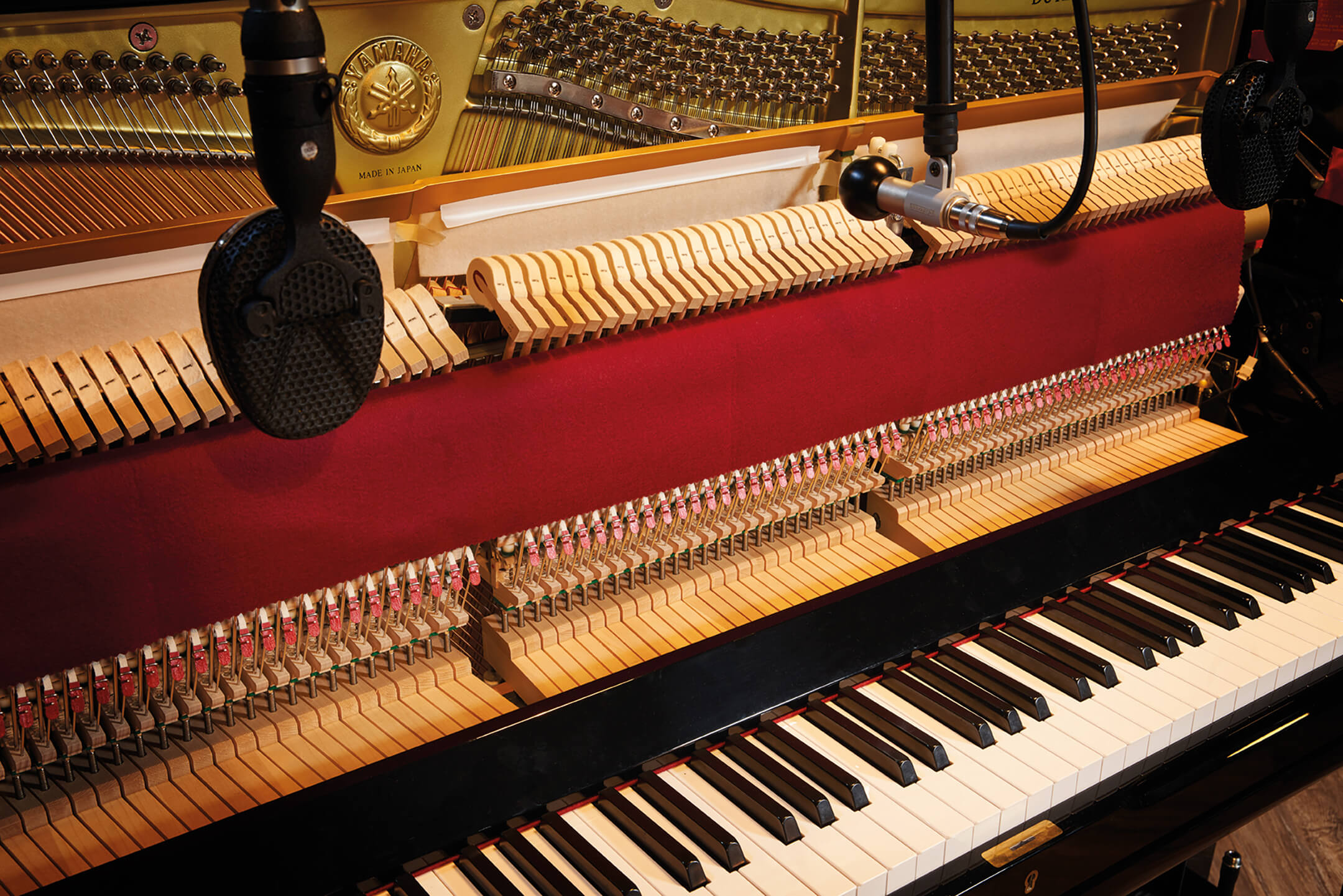
MT: Have the events of 2020 and the ultimate release of this new album led to a place of calm for you?
OA: Yes – or, at least, I’ve found a desire to search for that place. There’s been a shift in my mindset in terms of what I want. Whether I’ve found that calm? That’s probably a lifelong mission. I’ve realised that I’m more interested in telling or being part of stories rather than ‘doing a job’. I’ve pushed away projects that I was involved in to focus on art as personal expression.
MT: How much of the album existed before the pandemic and how much has been a reaction to it?
OA: About half of the album was written before the pandemic but everything was recorded and finished during those past few months. But I was already on a path before everything shut down, to concentrate on what is important in life: human connection. The pandemic confirms all that. If it teaches us anything, it’s the importance of human connection.
“I’m addicted to spaces. I’m very sensitive to them. I can’t write just anywhere”
MT: It feels like the narrative arc of the album is reflected in the sequencing of the tracks as well as the title. It feels like peace is found as it unfolds.
OA: Yes, that’s fair. The oldest track on the album [Loom] is the first one. I did swap a few things around but mostly the album was written in the order it appears. This was not done consciously. It just turned out that the tracks made the most sense in the order that I wrote them, which I think is telling – it’s the story of my life for these months.
MT: Looking back at the beginning of your musical life, you played in metal bands and loved Chopin. Those are diverse influences. How did you focus on what you wanted to do?
OA: I’m reminded of one the track titles, We Contain Multitudes. It feels appropriate here. For me, sounds and genres aren’t mutually exclusive. They don’t belong in different worlds. All of us have different things inside us. We can choose to take different routes. There were years when I was concentrating on being a drummer and a performer not only in hardcore punk bands but also playing jazz and as a session player. I thought that my path in life would be as a drummer. It was just by total accident that someone heard some of the music I wrote on the piano and the ball started rolling. That took over my life and now it’s all I live for. But the fact that I come from being a drummer and a sound engineer in studios really affects the way that I make music now – in a big way.
MT: Would it be fair to say the quality and texture of sounds are as as important to you as the notes?
OA: Yeah! You can take it back further to a wider perspective: why are you not playing this on guitar instead of piano? Because it would be a different sound. Then if you zoom in further: why play this piano instead of that piano? Then zoom in further again: why this mic and not that mic? Why place it here instead of there? It’s all part of the same creative decision in terms of what the music is supposed to be saying.
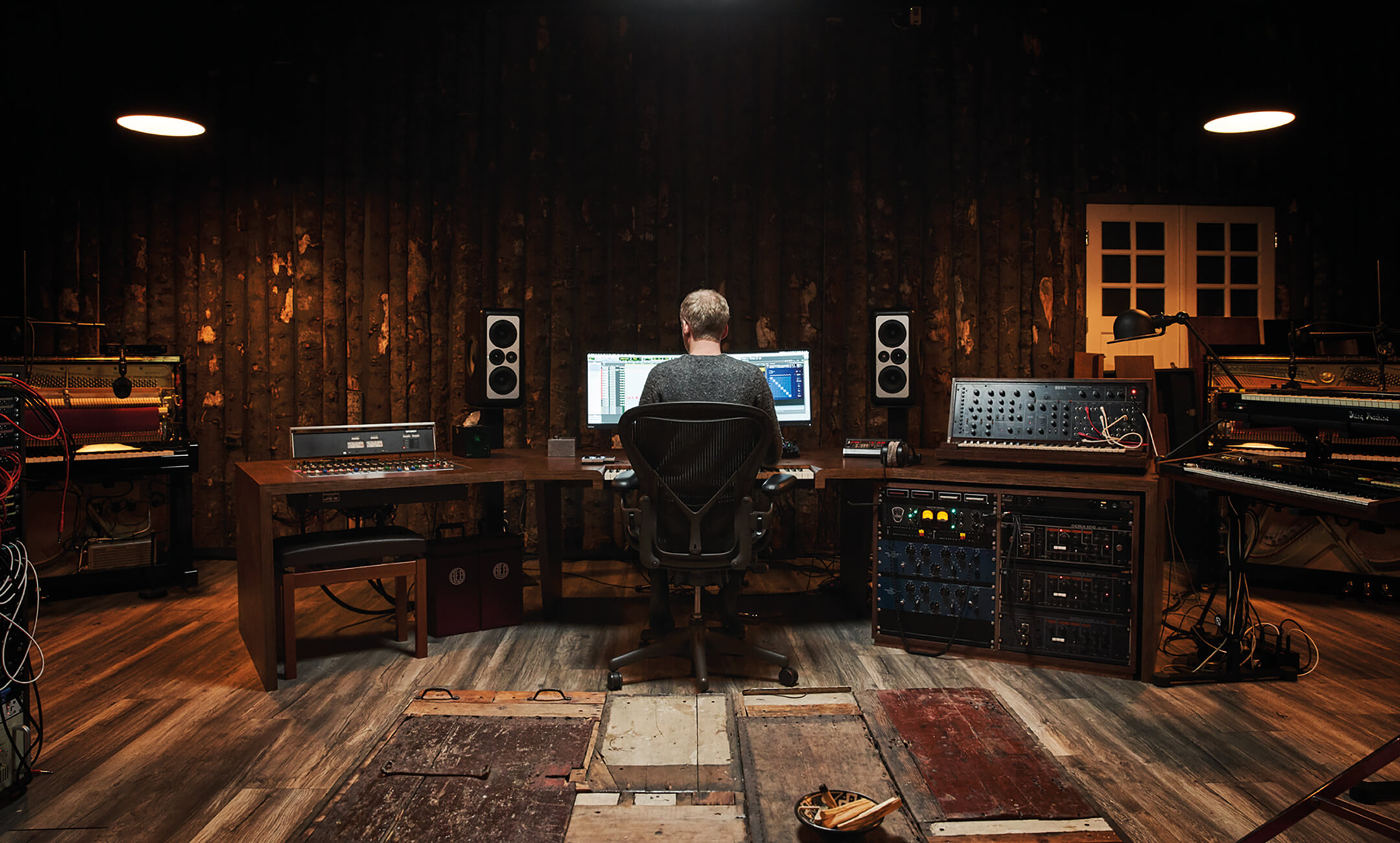
MT: So composition and production are part of the same process rather than separate entities?
OA: Yes. But I’m not unique in that. With mainstream music today, producers are doing the composing, the songwriting. They’re writing the beats and the background tracks for vocalists. In general, in the modern world, this is how we look at music – it’s all sound design as much as melodies. That’s no different for me than in pop music. People are surprised about that with me for some reason because I’m doing the same thing with classical instruments rather than working with loops in Ableton Live.
“It’s all sound design as much as melodies – it’s no different than in pop music”
MT: It feels as though there’s a homogeneity in the sounds of your records, whether you’re working with electronic sounds or recordings of real instruments. You seek out a particular ‘quality’ of sound.
OA: There are choices I make on both sides, both in terms of the synth sounds I choose and the musicians I collaborate with. That has been the work of the past 10 years of playing with the same people all the time, to slowly define our sound. There are things in stringed instruments that don’t match with electronic ones. But when you play a certain way, you get rid of those high mid-overtones, which helps glue things together.
But of course, I’m making the same choices on the synth side to find sounds that fit with the strings, so it can work that way round too. When we think of string players performing, we think of players dragging bows across their strings. But there are a number of ways to do this, depending on how much pressure you put on the bow and string and where exactly you choose to place the bow. There are timbral differences to be found within each of those choices.
MT: You mean string techniques such as flautando, where the bow is drawn lightly over the strings above the fingerboard?
OA: Flautando is part of it but we actually use sul tasto more than flautando, which is where you play more up towards the neck of the instruments to give you a hollow and more harmonic-sounding tone. If you combine this with keeping to the lower end of the instrument’s range – violinists staying on the G string, violas staying on the C string, for example – then you can get a warmer sound with fewer overtones. It’s really all about not having to EQ things in the mix.
If you play things big and bright, you will end up with frequencies you will have to unavoidably carve out in the mix, and this is kind of doing that at the source.
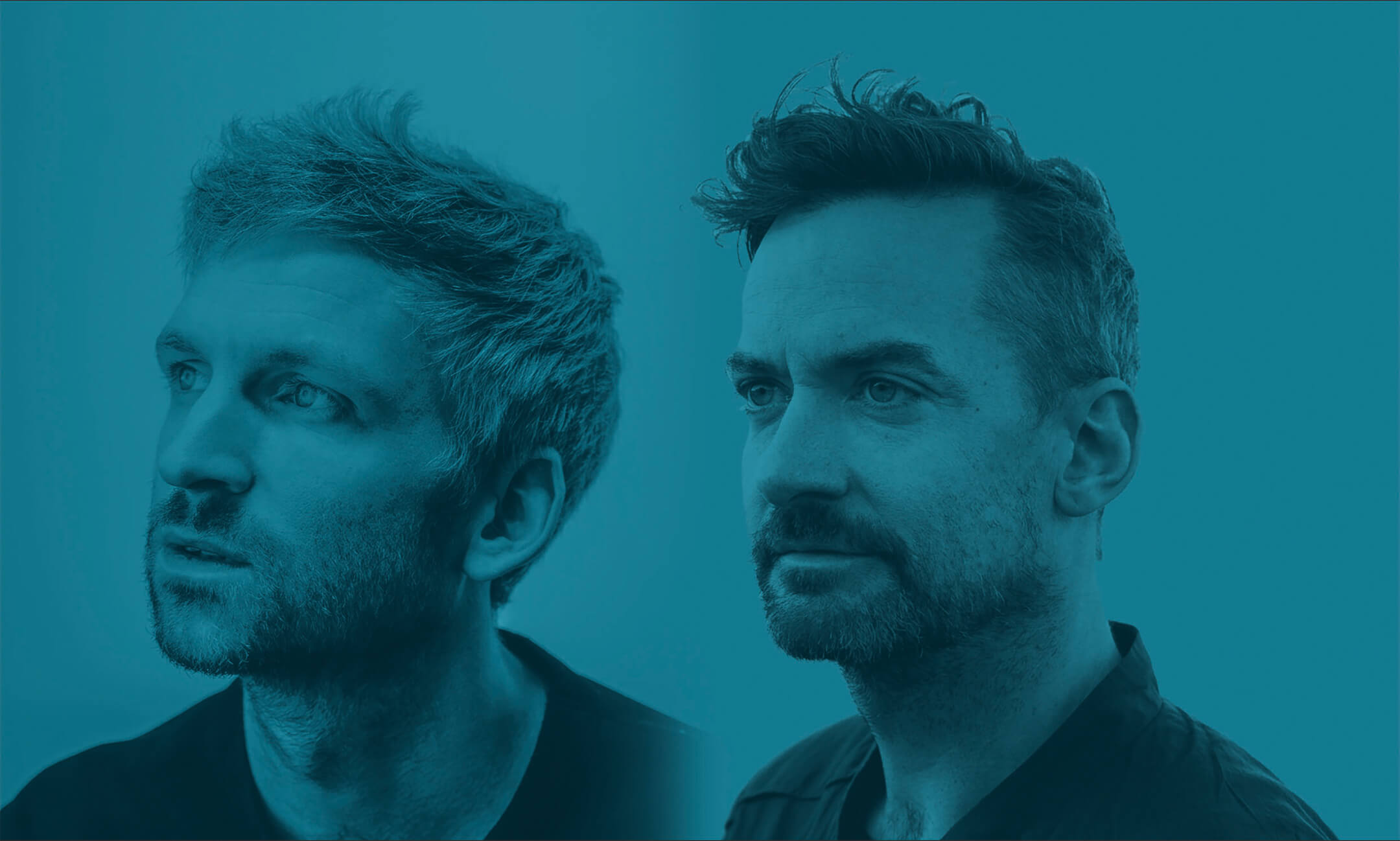
MT: How do you get into the right mindset to be productive? Do you do this before you get into the studio or does the studio provide the means to achieve the right state of mind?
OA: In terms of getting into the right mood, I’m addicted to spaces. I cultivate my spaces very particularly and I’m very sensitive to them. I can’t write just anywhere. I can come up with ideas if I’m on tour maybe but I can’t go deep into it unless I’m in my studio. I often find if I’m getting stuck, it’s just because I’m not fully in the space yet. Often, it just takes staying in there, relaxing and just really feeling the space. You have to place everything in the room so that it’s the most friendly it can be to creativity.
“I’m an analogue guy but I’m not anti-digital – it’s about a marriage between the two
Can I work fast here or do I have to walk to the other side of the room to touch that button? I try to have everything set up so that there are always mics on every piano – there’s always a mic set up for vocals, there are two mics hanging from the ceiling. But at the same time, you don’t want things to become too easy, with everything in front of you. I used to have my studio like that. I had a desk with all the rack stuff at my sides. Every button was within reach. But I felt it made me too closed off. You need to walk around the space.
MT: Does that extend to your relationship between hardware and in-the-box production tools?
OA: I’m an analogue guy for the most part but I’m not in any way an anti-digital guy – it’s about a marriage between the two. Modern technology is amazing. I really care about preamps and mics, external EQs and compressors. But anything to do with the editing part, let’s say surgical EQ-ing, for example, it’s all in-the-box. But I don’t have a single soft-synthesiser. Everything you need to create the character of the sound that becomes an expression of what you’re doing, for me, that all needs to be outside of the computer. But anything that becomes more of a logistical problem – like how you place those into the mix, whether something is on the left or on the right, or precision EQ-ing – all of that’s fine in the computer.
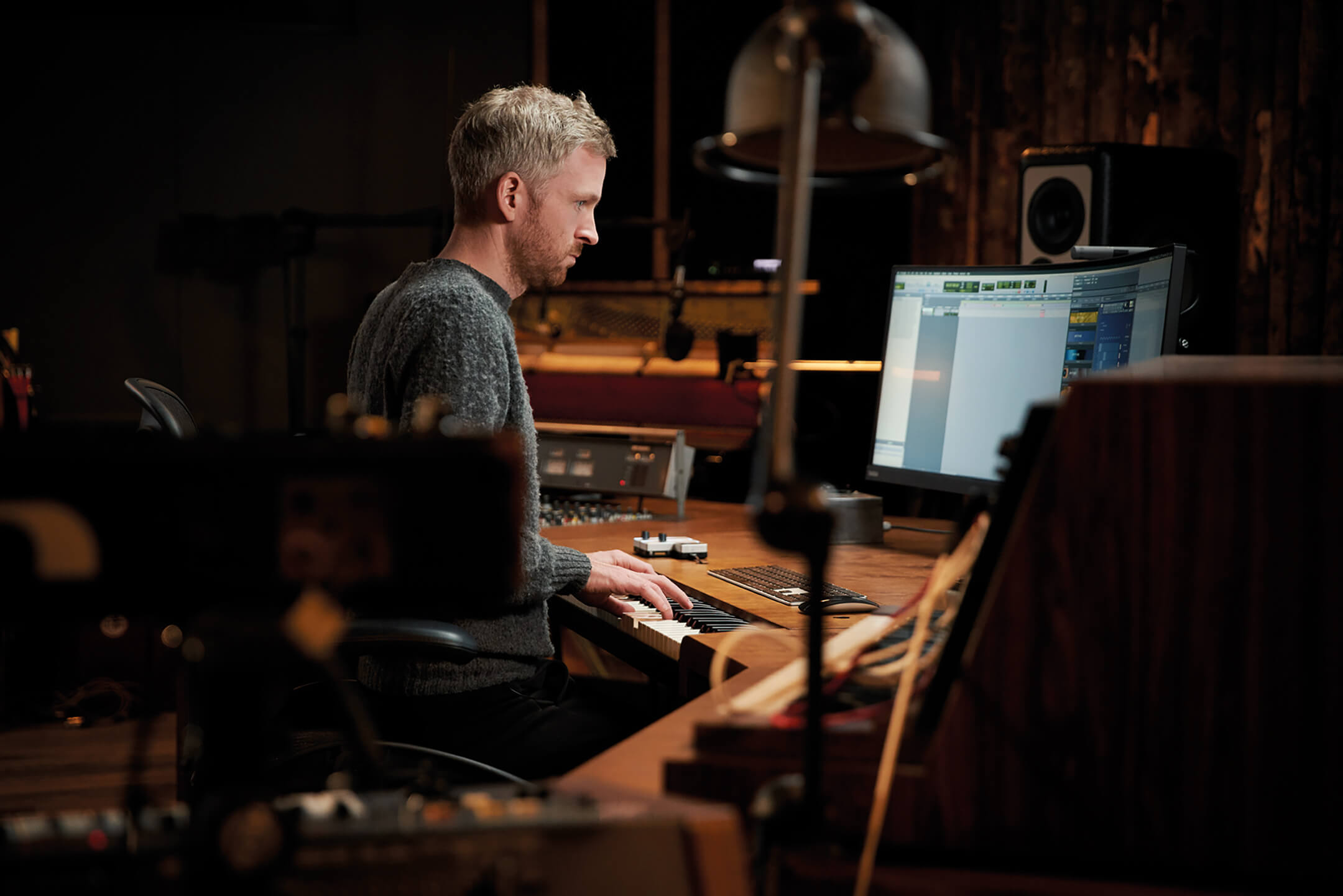
MT: Which DAW do you use?
OA: Pro Tools. But if I want to manipulate things in more creative ways, I use Ableton Live. Pro Tools just isn’t made for that. But I’m an engineer. If I want things to make sense to me, then Pro Tools does just that, because it’s a recording program. I’m too young to have grown up recording with tape – my first recordings were made using software. But these days, I do use tape, mostly for effects. I have a couple of nice machines and I use them especially for solo piano recordings, just to add a little instability to them.
MT: Talk us through your microphone choices.
OA: A lot of them are things I’ve learnt to use through experience over the years. For instance, I use the Neumann KM84s on strings – I’ll probably never change that. Someone told me to try that at some point and I just liked it. I don’t have a huge collection of mics. I just want to own precisely the stuff I need. There’s a lot of tubes involved in what I do because I like the warmth. For for the strings, it’s KM84s, and for main mics in front of the strings, I like to use the original AKG C12. There’s also a pair of Coles but I just add them for their low-end warmth, and I cut out the top-end harshness.
“Collaborations are never career decisions. I just need to want to hang out with them”
MT: You’ve collaborated extensively with Spitfire Audio, most recently for the Stratus library. How did that relationship start?
OA: I contacted them because I needed something! I use samples a lot when I’m writing, particularly strings and piano. I had this beautiful, rare felt grand piano and I wanted its sound in a sample pack. I contacted Spitfire because I couldn’t find a sampled piano that I really liked. I said “I think there’s a lack of something here. Can I help you make it?” It was a purely selfish endeavour! But we really got along. We have a very similar approach to sampling – that it’s not designed as a final product, it’s supposed to be something that inspires new ideas. We’ve had a fruitful relationship. We’re good friends. We love working together.
MT: The Stratus instrument is a key component to your sound. Did you feel conflicted making that available to everyone via a sample library?
OA: First of all, I don’t feel like “that sound” is my property. All the decisions I make in my creative process are, in turn, influenced by other people. I don’t believe anything is an original idea. My ideas are influenced by countless people: the string sound I like is determined more by the string players I work with than me. Because I don’t know how to play the violin, all I do is to help guide the players.
But it’s actually really great to give up your secrets because it forces you to move on. If everybody is using my sound, it’s going to be a great kick in the butt for me to try and find a new one. It keeps me evolving and looking for new things, and helps me avoid getting stuck in a loop.
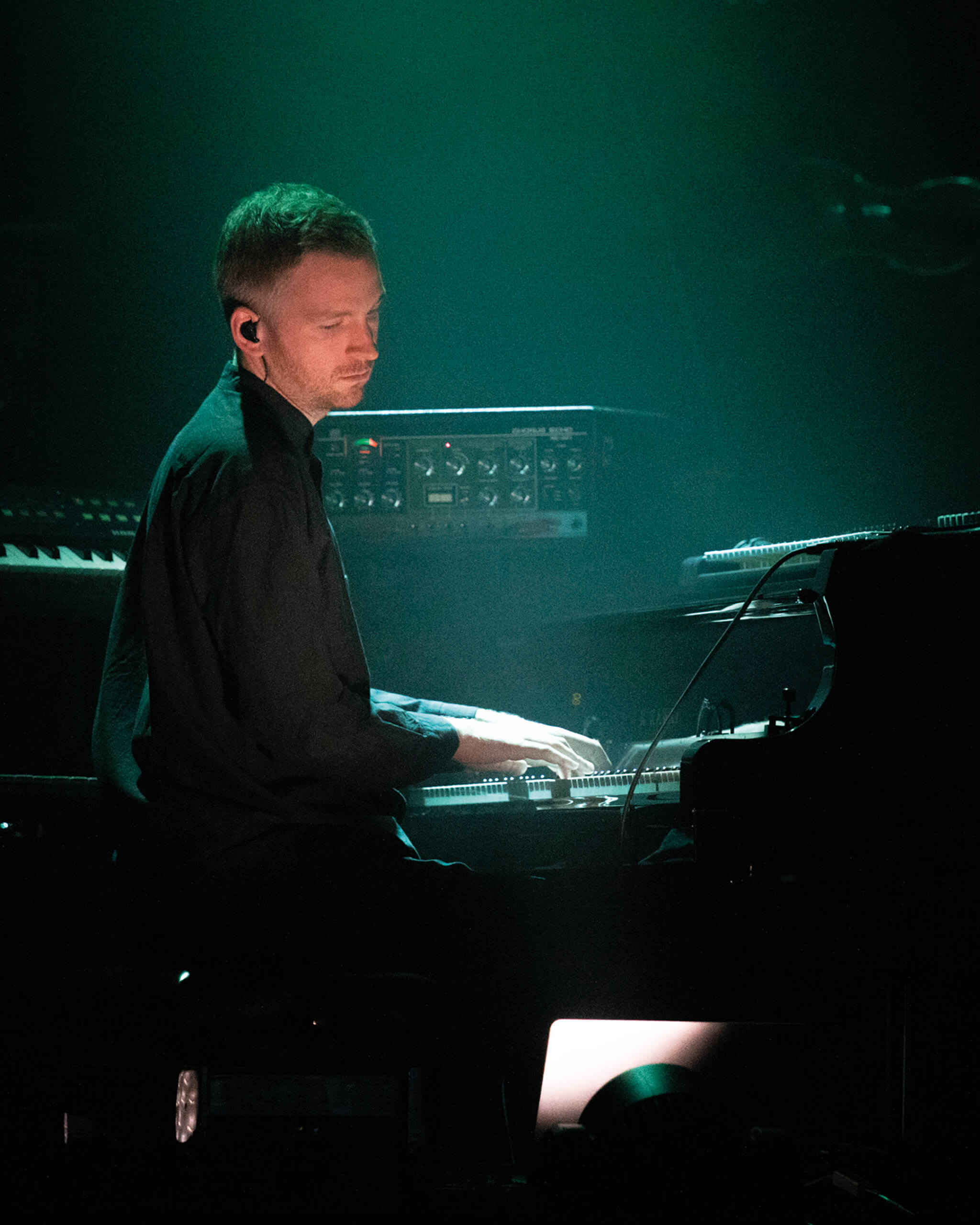
MT: You mentioned you were stepping away from writing for picture. Are you stopping that altogether or just changing your relationship with it?
OA: I’ll definitely keep doing it. It just needs to be in the right moment. It’s not a very different way of working but it’s a very different mindset. I just need to be in the mood when I do it. I would be interested in picking one really good project to do each year and do it really well but I don’t have an interest in becoming a career film composer.
MT: On Some Kind of Peace, you collaborate with Bonobo, Josin and JFDR. What’s the mindset required to collaborate, rather than working solo?
OA: You have to let go of your desire to control everything. I try to put my mind in a place where I am open to learning. I think that’s one of the most important things – what can this person teach me right now? How can this collaboration benefit me so that I become better at what I do? By going into it with that mindset – that this person truly has something they can teach you – you also open up to their ideas more. But collaborations are never career decisions.
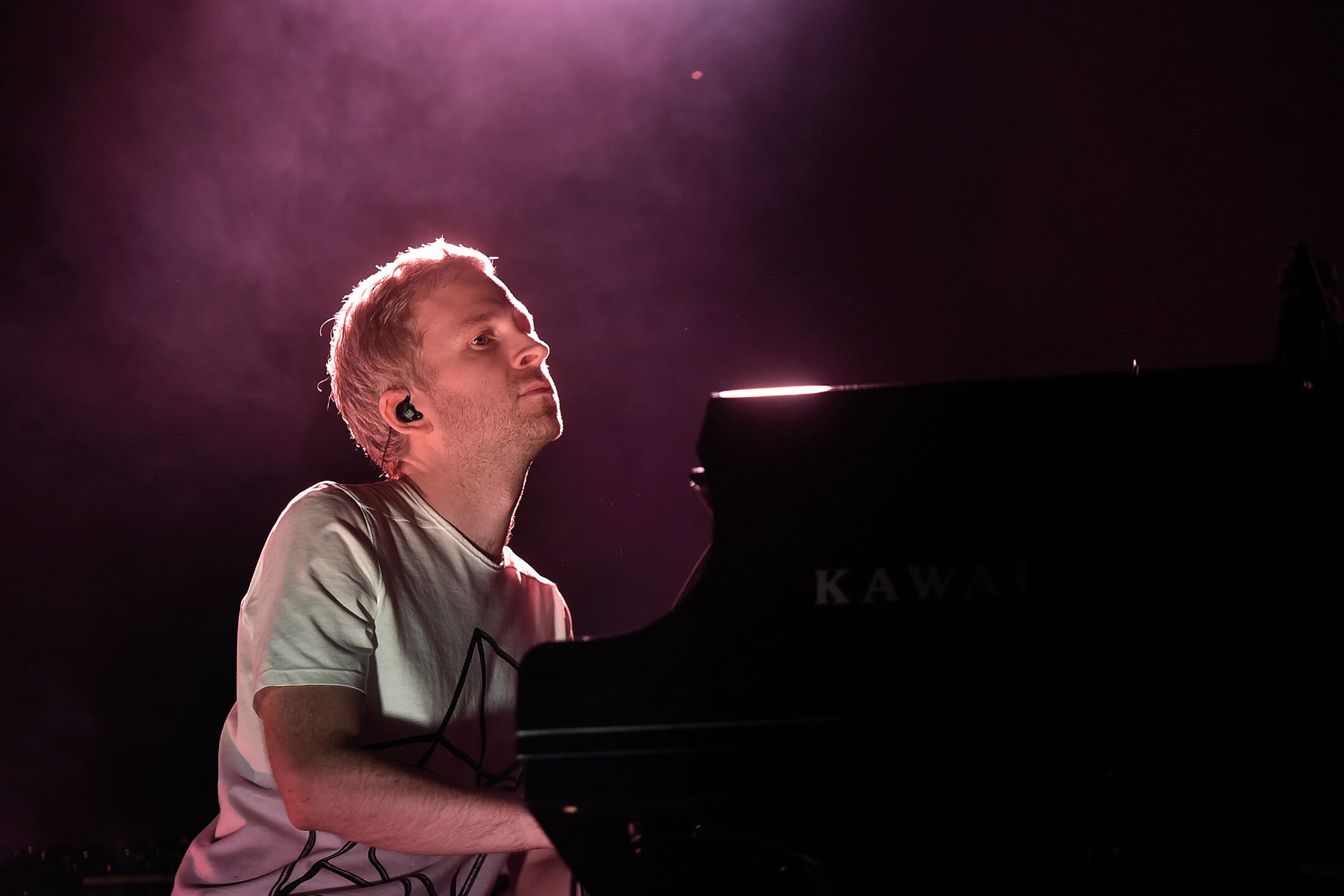
I just need to like the person and want to hang out with them, and then hang out in the studio. It grows organically out of a relationship that already exists – that’s really important. That said, at the moment, collaboration is mostly happening remotely. In which case, someone needs to come up with the idea – the core of it. I like to send people a chord progression I’ve come up with, or send them a piano line or a melody. Either that, or I like to have someone send me something that I can then work on top of. I think when you’re doing that, the idea needs to be really strong; you can’t leave it too open. In normal, non-pandemic times, I would rather just have someone come here so that we could jam and improvise until there’s an idea that comes from both of us.
MT: Do you plan to release more music as Kiasmos, your techno project with Janus Rasmussen?
OA: Yes! That’s funny – he actually just messaged me five minutes ago. Yeah, we are slowly getting there. It’s been a crazy year. I’ve been making Some Kind of Peace and Janus has been off doing his solo stuff too, so it’s been slow-going for us but I think something will happen next year.
MT: Let’s talk about the Korg PS-3100, which also features prominently in the Stratus Spitfire library.
OA: The Korg PS-3100 is my all-time favourite synthesiser and it’s all over Some Kind of Peace. I’m not lying when I say that it’s pretty much the only synth on the record – maybe with the exception of one lead and a couple of sub-bass lines from the Roland Juno. But all of the characteristic lines come from the Korg.
Loom, the song I wrote with Bonobo – all those synth lines come from the Korg. What I got really into on this record was using my original Stratus software and applying that software to the Korg to have it come up with patterns. This was hugely inspiring. You can hear it in New Grass – I’m actually sending the piano Stratus stuff to the Korg too, which creates this texture that turned out to be very unique and a big discovery for me.
I just keep finding new things with that synth. I’ve had it for about five years. I used it for the first time when I worked with Nils Frahm on our collaborative Trance Frendz record. He had just got one and we were both kind of discovering it at the same time and, when I got home, I started looking for one too. I got really lucky because they can be very expensive. I found a guy who was super-chill and he gave it to me for a really fair price. I like that
synth more because of that!
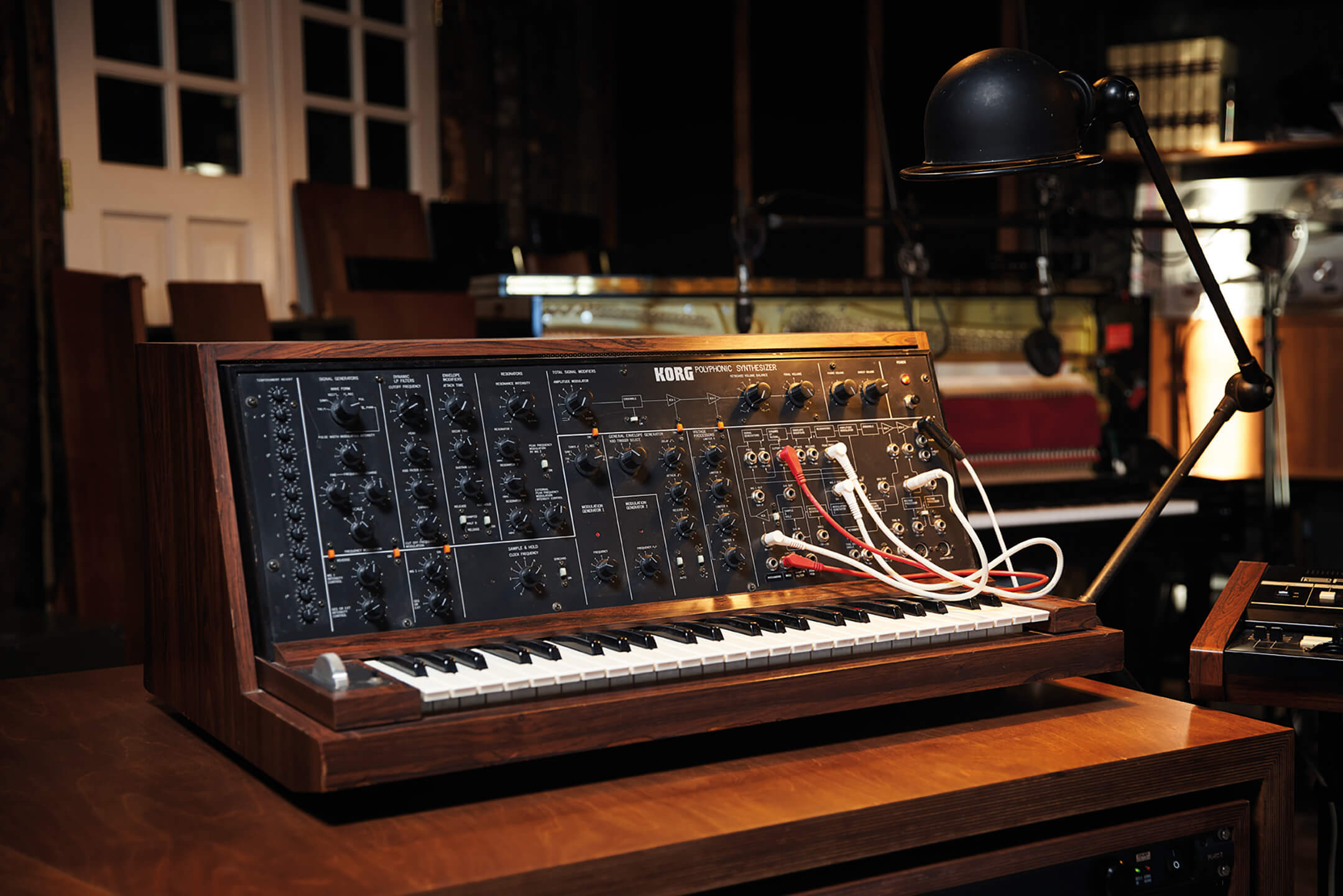
MT: What else provides inspiration like the Korg does?
OA: On this record, it’s mostly that synth. I don’t think I realised quite how much until now. But I did use the Tape Echo from Roland, which bring everything to life. The other thing that was new for this record was the Studer desk. It was my first time in my own studio working with a console, and I think it affected my workflow in a big way – working with synths and suddenly I was hands-on. I only used the Studer at the tracking stage – I haven’t mixed through it yet. It’s more about the interesting sounds that you can make by creating feedback from different outboard effects; you can send this sound into a Space Echo and from the Space Echo into a reverb, for example.
“I’ll be glad to be able to tour again but I do hope we learn something from these times”
This is something that wouldn’t be so easy to do from the computer with all of the patching and all of the buttons you’d need to press – you probably wouldn’t end up in that place. And if you try to set up the same thing on a computer, you have to think about what you want before you get it, which means you control the result. Doing it this way, it’s more like the difference between a soft-synth and a hardware synth – touching buttons with your mouse rather than with your hand. Cognitively, it’s just a very different process.
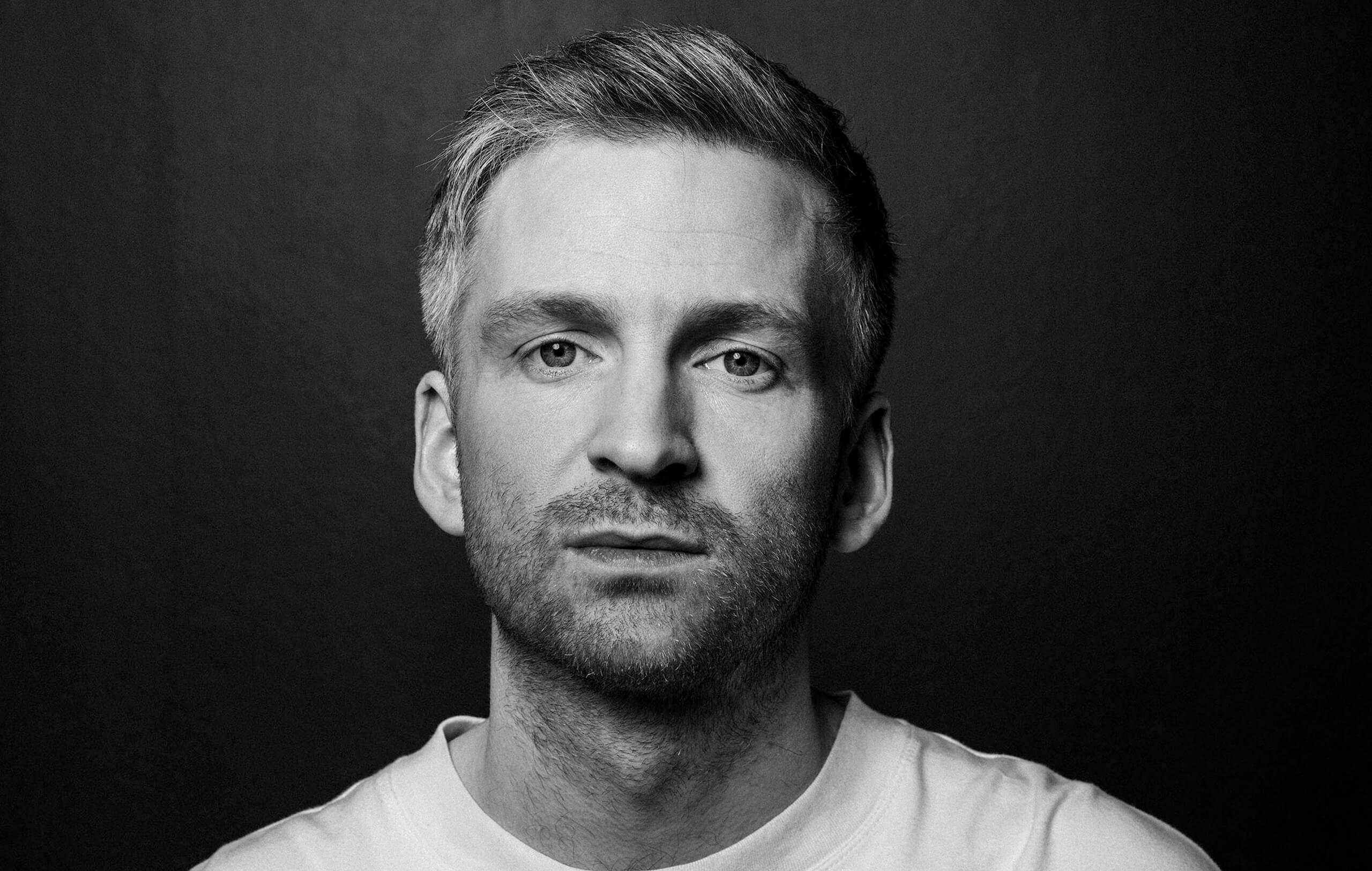
MT: How does it feel to not be able to put plans in place to tour this album due to the pandemic? That’s always been something you’ve done before.
OA: It would be easy to be really disappointed and to be sad about it. But I’ve never fallen into that. This situation isn’t anyone’s fault so you can’t be mad that touring isn’t possible right now. I think that all of us being responsible and getting through this together is a bigger thing, so I don’t feel like me not touring is actually important in this context. However, I do think it’s been a really interesting challenge for us, because our industry is built up in such a way that you make a record and you promote it and tour it and, for a lot of people, that’s how you make money. There’s not much money for most people in releasing records. So, for me, there’s an interesting and exciting challenge in that – what do we do? How do we do this now?
We just have to make our minds as wide open as possible and, in the end, I think that that’s a very healthy thing for all of us to do. I do think that when we can eventually get back to touring, this period will have had a lasting impact on how we release music in the future. I will be very glad to be able to tour again but I do hope that we learn something from these times.
Also, I hope that we’re all gaining a little more awareness of how unhealthy for our planet our lifestyle has been until this – maybe we’ll be forced to. I think the touring industry will take some time to come back, so we might be forced to make some changes that might also be good for our planet. That’s a positive.
Some Kind of Peace is out now. For more info, visit olafurarnalds.com.